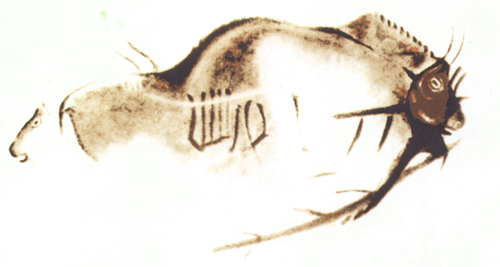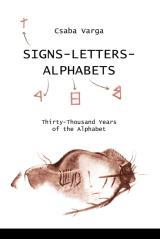Did really everybody understand each other before the “confusion” happened at Babel? Or was that “misunderstanding” caused by a mass of foreign “guest-worker” – speaking different languages – coming over to build the huge tower of Babel? This was also the time, when the Acadians – speaking a dialect of the agglutinating Sumerian language – started hiding their power-giving knowledge by introducing kabala and “temura” into the writing system to make it inaccessible for aggressive new immigrants.

(Pech Merle – France)
It is a widespread belief that there was a common language spoken by our early ancestors and linguists call it the “proto-nostratic” or „nostratic language“.
Some linguists try to figure out what this common language looked like and which languages are the closest successors of it. Other linguists however, deny its possible existence or refuse to deal with.
We are convinced that early humans – our common ancestors – were intelligent and lived in well-organized neighborhoods. Intelligent people communicate with each other, write down important notes as well as numbers.
Varga Csaba demonstrates in his book “Signs – Letters – Alphabets” the over 30,000 years writing history of humans. Our ancestors left beautiful murals and drawings behind on cave-walls in South-France and Portugal 30 thousands years ago. They wrote signs and numbers on these pictures. Some signs turned out as letters of our archaic alphabets – the forerunners of the Latin alphabet.
The numerals written on these pictures – dots and lines – were used in old Egypt, by the Mayas until 1500AD and by Hungarian-Szekely people in the salt-mines of Transylvania until 100 years ago.
This lines and dots became the wires and balls of the “abacus”, therefore millions of people are still using those archaic way of calculation all over the world.
Letters of an alphabet can be used by different languages but “ligatures” – the combination of several letters – are made for and can be read in one special language only.
The same signs, the same letters returned again and again during the 30.000 years of history across Eurasia. People of different cultures at different times picked always “letters” out of the same “sign-collection” (the letter collection) to build an alphabet fitting properly their language.
This means for us that high quality human culture must have existed before 35.000 Years even when most of the artifacts, which could proof this, disappeared due to decay or to natural and man-made disasters. In spite of temporary recessions because of huge catastrophic events around 12.500 and 5-6.000 years ago, human culture must have been continuous until now.
The pronunciation of the Hungarian words for English speaking readers
This book is about comparing English with Hungarian language therefore it is important for English speaking readers to know the Hungarian pronunciation in order to follow the explanations. We tried to use the usual alphabet – with exception of “ε”, „œ” and — „ž” – and rather doubled the letters for the “long” (aa) vocals or used two letters (ch) to get closer to the right pronunciation.
The pronunciation of the Hungarian alphabet for English speaking people as it is used in this script:
| A <a> („flop”) | I <i> (ink) | P <p> (pair) | ||
| Á <aa> (arm) | Í <ii> (evening) | R <r> (run) | ||
| B <b> (boat) | J <y> (young) | S <sh> (dish) | ||
| C <cz> (czar) | K <k> (milk) | SZ <s> (list) | ||
| CS <ch> (church) | L <l> (play) | T <t> (time) | ||
| D <d> (wand) | Ly <y> (young) | Ty <tj> (Katja) | ||
| E <ε> (gender) | M <m> (milk) | U <u> (book) | ||
| É <e> (illustrate) | N <n> (no) | Ú <uu> (ooze) | ||
| F <f> (friend) | Ny <nj> (el ninjo) | Ü <ue> (Munich) | ||
| G <g> (go) | O <o> (hold) | V <v> (have) | ||
| GY <dj> (George) | Ó <ó> (open) | Z <z> (zoo) | ||
| H <h> (have) | Ö <œ> (her) | Zs <ž> (treasure) |

